TORONTO (Oct. 14) — Having lost my father, Irv, ten days ago, I’ve been in a reflective mood. Which isn’t unusual for me. Dad was, foremost, a kind, gentle man with remarkable generosity and unwavering business ethics. A role model any son would treasure. He was also the person who, rather unwittingly, introduced me to sports.
My earliest memories involve watching the Leafs on Saturday nights in the mid–1960’s with Mom and Dad. In our living room on a large, black–and–white console (a TV imbedded in furniture). The picture fading in and out, depending on the weather. A fuzzy image rectifiable by moving around “rabbit ears” (an antenna atop the console). In the era just prior to cable. When I say “unwittingly”, and though Dad never mentioned it, I imagine he secretly hoped I would follow him into the field of chartered accounting. Where he excelled for more than half–a–century.
But, the sports bug bit me early… and that’s the path I chose. Which ultimately made my father proud.
I shared many sporting moments with Dad. Here’s a pictorial history — from 1966 to 2014:
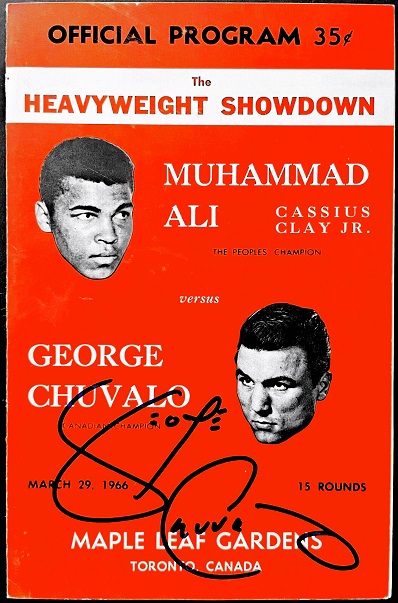
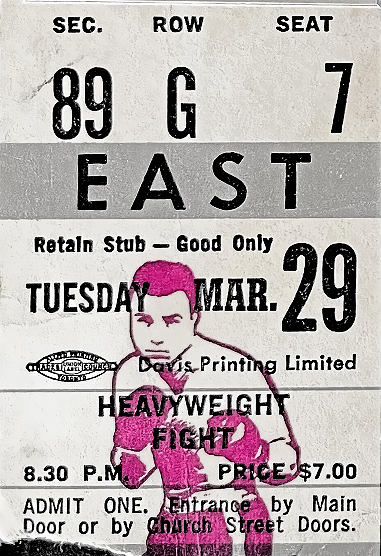
It wasn’t until ten years after this famous boxing match at Maple Leaf Gardens that Dad told me he attended, sitting in the Greens. Coincidentally, my first Crohn’s surgery took place at Toronto General Hospital on Mar. 29, 1976 — one decade to the night that Canadian heavyweight champion George Chuvalo went 15 rounds with Cassius Clay (recently having adopted the Muslim name Muhammad Ali) here in Toronto. I somehow remember the date symmetry arising in a conversation with Dad just prior to my operation. As evidenced by the Grey ticket stub, above, you could watch the fight from the nosebleed seats at the Gardens for a mere $7. Ali won an easy, unanimous decision, but the gritty Chuvalo stayed on his feet through all 15 rounds.
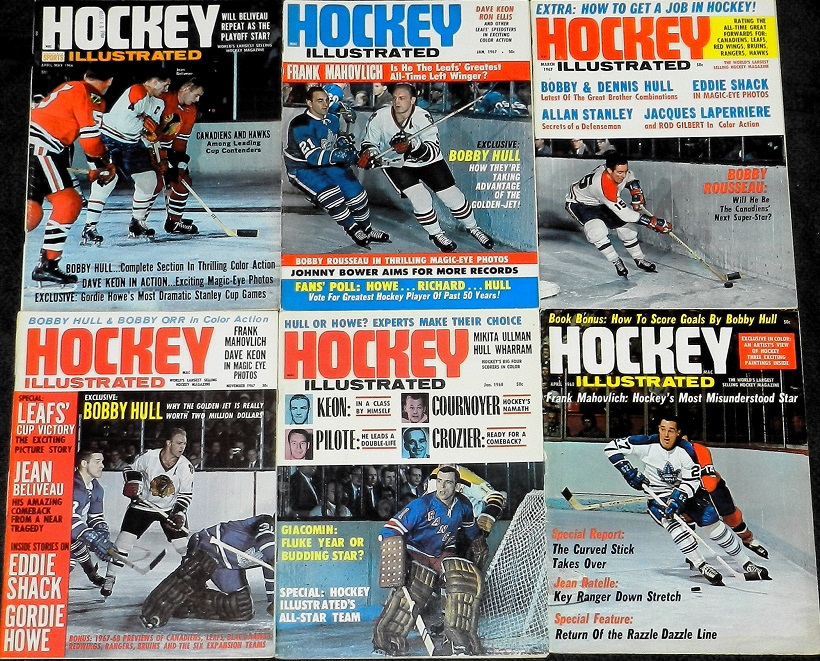
These are the magazines Dad would bring home after work (with his Toronto Star) from the Cigar Store at the Bathurst Manor Plaza, around the corner from where we lived. For whatever reason, I would immediately destroy the items by cutting out the photos and pasting them in a scrap book. Later on, I purchased many of the old Hockey Illustrated magazines at sports memorabilia shows. The different periodicals from the 60’s and 70’s (Hockey Illustrated, Hockey World, Hockey Pictorial, Action Sports Hockey) rank among the largest and most–coveted items in my collection. And, they rekindle so many fond, distant memories. All because of my father.
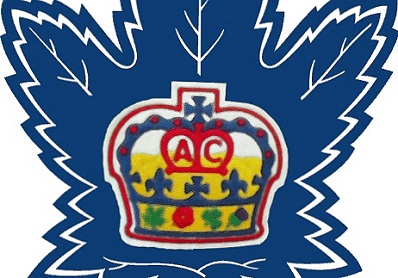
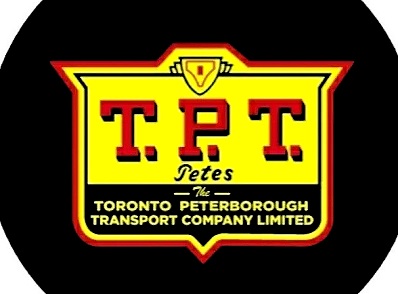
The first live sports event I attended was with Dad on Mar. 6, 1966: a Junior hockey game between the Toronto Marlboros and Peterborough Petes at the Gardens (just more than a month after my seventh birthday). It was the season before the mezzanine balconies were installed in the north and south ends of the arena; they were constructed in the summer of 1966 and opened for the ’66–67 National Hockey League schedule, adding nearly 2,000 seats. The walls that the balconies would cover were still bare. At the south end, cathedral–type windows that overlooked Carlton St. drew natural light into the building. If you stand, today, opposite the main entrance of the Gardens, these vertical window–panes are evident above the arena masthead. The previous night, I’d been allowed to stay up a bit later and watch the Leafs home game against Chicago. I remember thinking, “Wow! I’m actually going to be in that arena tomorrow.” Among the players I recall were the goalies: Al Smith for Toronto and Fern Rivard for Peterborough. Lanky Wayne Carleton was the Marlies’ best player while smallish Andre Lacroix starred for Peterborough; he would lead the OHA Junior circuit in scoring for the 1965–66 season with 120 points.
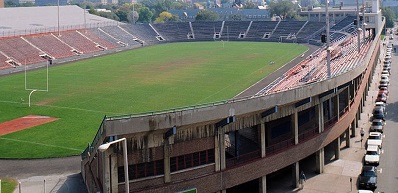
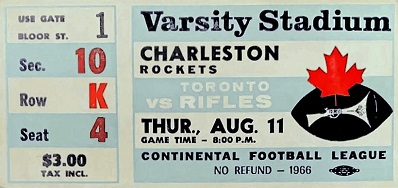
Dad took me to my first live football game on Nov. 5, 1966 (a Saturday night), as the Toronto Rifles of the Continental Football League blanked the Wheeling Ironmen, 10–0, before a “crowd” of 4,588 at old Varsity Stadium. The Rifles had relocated from Montreal and played their 1965 home games at Maple Leaf Stadium. They moved to Varsity for the 1966 season. The club folded four games into the 1967 schedule, after the Toronto Argonauts had plundered Rifles head coach Leo Cahill. I remember the Rifles and Wheeling played at night — Toronto in red jerseys with white helmets and pants; the Ironmen looking Notre Dame–ish in white jerseys with gold pants and helmets. We sat around the 30–yard line in the west stands, near the south goal line.
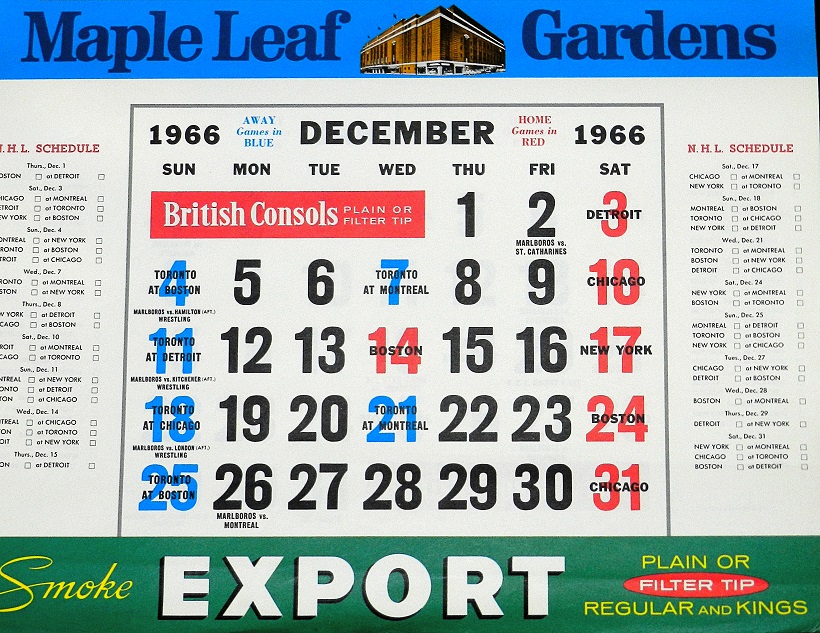
It was only four weeks later that Dad took me to my first Leafs game — Saturday, Dec. 3, 1966, against Detroit. This page is from the 1966–67 EXPORT Maple Leaf Gardens calendar. Dad and I sat in the East Blues, roughly 12 rows up from the glass and just inside the north blue line. As such, the bright TV lights installed for that season shone in our eyes from the opposite side of the arena. Having watched Leafs games only on a black–and–white television, it was the first time seeing Toronto’s navy uniforms. And, the white Detroit road jerseys with the red winged–wheel logo; red pants and striping on the sleeves and socks. The colors were absolutely brilliant. By then, I was familiar with the Leaf players. But, to actually view such legends as Johnny Bower, Terry Sawchuk, Dave Keon, Frank Mahovlich, George Armstrong, Tim Horton, Bob Baun and the others skating in the warm-up induced an out–of–body experience for a kid not yet eight years old. At the opposite end was — my Gawd! — Gordie Howe, merely the greatest player in hockey annals to that point; then in his 22nd NHL season. I also remember a Detroit player oddly wearing a white surgeon’s mask throughout the game. It was Paul Henderson, No. 19, who suffered from a respiratory ailment. Henderson would be traded to the Leafs in the Mahovlich deal of Mar. 3, 1968. He then attained worldwide hockey fame by scoring the decisive, last–minute goal for Canada, at Moscow, in Game 8 of the original summit series against the Russians (Sep. 28, 1972). On this milestone night in 1966, the Leafs skated to a 5–2 victory; Toronto’s eighth win in 14 games to start the season. The first live goal I witnessed was scored just 52 seconds after the opening face–off: by Red Kelly of the Leafs (Larry Jeffrey earning the lone assist). Dave Keon (from Mahovlich and Marcel Provovost) at 6:48; then Jim Pappin (from Bob Pulford and Mahovlich) at 12:08 had the Leafs in front, 3-0, after the first period. Pulford (from Eddie Shack and John Brenneman) made it 4–0 at 6:11 of the second period. Ted Hampson (from Ray Cullen and Howe) finally put the visitors on the board at 16:15 of the middle frame. Cullen scored (from Bert Marshall and Floyd Smith) at 8:57 of the third period to make the score interesting. But, captain Armstrong (from Keon) restored Toronto’s three–goal margin just 44 seconds later with Leo Boivin of Detroit off for hooking. The Red Wings outshot the Leafs, 37–35.
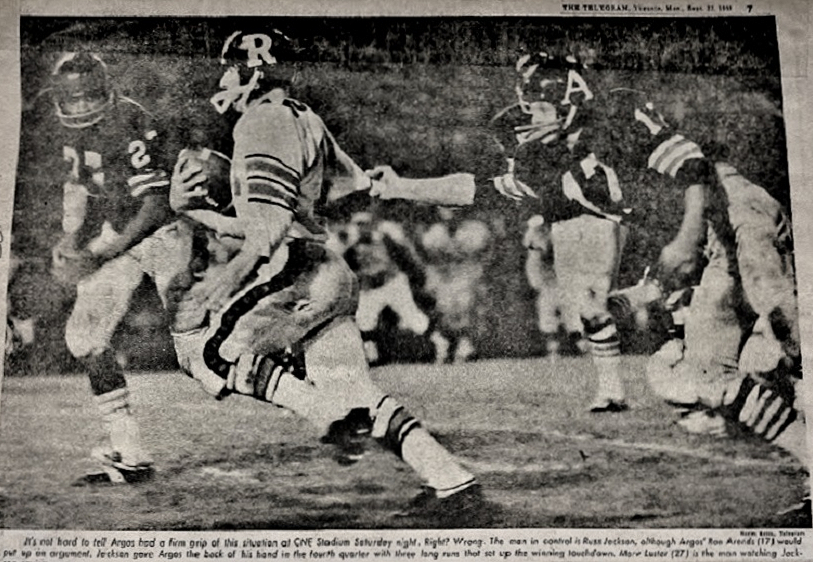
I remember, as a kid, attending the Canadian National Exhibition and asking Mom and Dad if we could go on the Ferris Wheel. Primarily because at the top of the ride, I could look to my right and see inside most of CNE Stadium, home of the Toronto Argonauts. Going to an Argos game, at that point, was merely a dream. We would also see the Kochman Hell Drivers (as they were known) — stunt men in stock cars who would perform routines on the running track that surrounded the playing field. My family would watch the cars. I would sit halfway up in the north grandstand, staring at the yard–markers on the grass field and the 12,000–seat bleacher on the south side. Wondering how it felt to be at an Argos game. The wait finally ended on Sep. 20, 1969, a Saturday night, two months after the first moon walk (Apollo 11). During the Leo Cahill era, in which tickets were at a premium in the 33,135–seat facility, Dad somehow found a pair in Sec. A of the grandstand, 50 rows up in the westernmost part of the stadium, ten yards beyond the end zone. Not that I cared. I was actually watching the Argos play. Live. The photo, above, is from the old Toronto Telegram. It shows Ottawa Rough Riders quarterback Russ Jackson trying to escape Toronto defender Ron Arends. Jackson, in his final season, led Ottawa on a late drive and a 34–27 win.
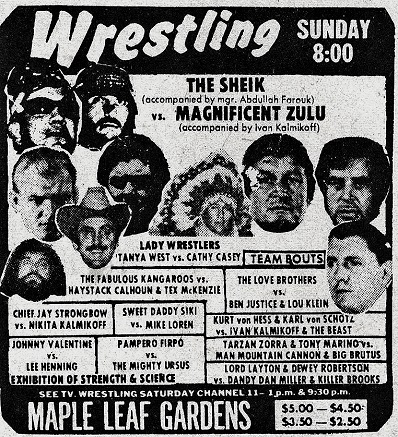
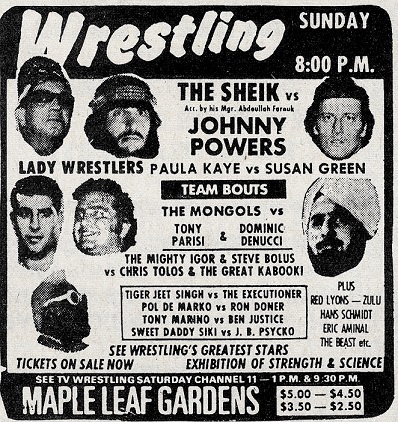
Like many of my peers, I would watch wrestling in my youth on Saturday evenings on CHCH–TV, Channel 11 in Hamilton. Lord Athol Layton hosted the show, which served as a promotional vehicle for the next wrestling card at Maple Leaf Gardens. Sometime in 1968, Dad took me to a wrestling show at MLG. We were low down, with a great view of the ring. I remember Ernie (the Cat) Ladd, a lineman with San Diego and Kansas City of the old American Football League; pro wrestler in the off–season, just mauled some poor sap. And, it scared me. I was crying. Dad said it would be my last wrestling show. He fibbed. A year later, we attended a card in which the main event was The Sheik vs. Bobo Brazil. I was much braver. And, hooked. Some of my best memories include going to wrestling matches in the early 70’s with Dad, my maternal grandfather (Alec Robins), my uncle, Ralph Blatt, and closest pal, Jeffrey Spiegelman. We must have seen The Sheik diabolically win 40 matches through the years. Look at the still–familiar names on the newspaper ads, above: The Fabulous Kangaroos; Haystack Calhoun, Tiger Jeet Singh, Tex McKenzie, Sweet Daddy Siki; Dewey Robertson, Dominic Denucci, The Mighty Igor, Hans Schmidt. Sunday night wrestling shows at Maple Leaf Gardens. Such wonderful family moments.
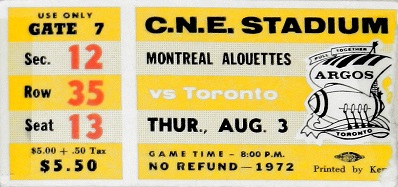
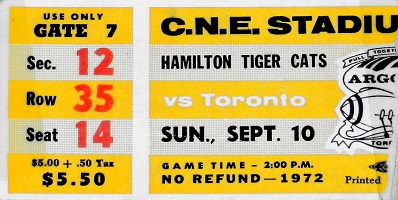
Having been to a handful of Argos games, I asked Dad if he’d consider buying season tickets for 1971. With no real sports connections, Dad drove to the club’s office on Richmond St. and picked from a meager selection of subscriber locations. He came away (above) with Sec. 12, Row 35, Seats 13 and 14 — in the uncovered south bleacher, adjacent to the west goal line. In the walking aisle halfway up the bleacher with a blue protecting rail in front of us. Still, we went to every Argos home game in that memorable ’71 season, during which rookies Joe Theismann, Leon McQuay and Jim Stillwagon led the club to a Grey Cup appearance against Calgary (14–11 loss). And, we kept going through 1974, after which the old stadium was remodeled for baseball. Then, in the atrocious Exhibition Stadium, on a silly angle to the football field, through the remainder of the decade.
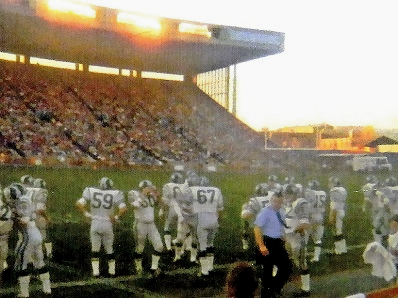
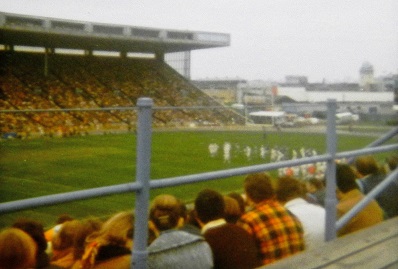
I still have a number of photos I snapped with an old Kodak pocket camera during the 1971 and 1972 Argo seasons at CNE Stadium. The image, top–left, shows the Saskatchewan Roughriders bench and the filled–to–capacity north grandstand. Just prior to kickoff on Aug. 6, 1971 (a Friday night). At right, is the view from our season tickets during a Sunday afternoon game against the Montreal Alouettes on Oct. 17, 1971.
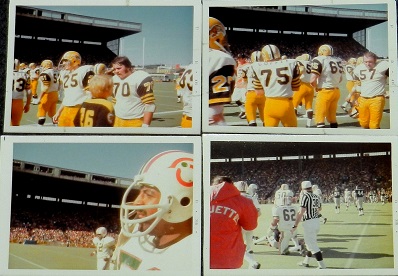
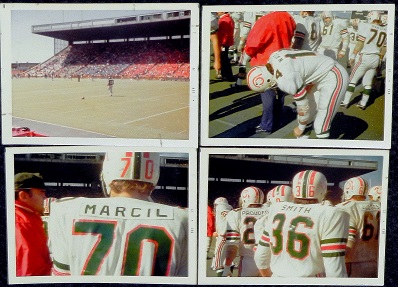
Somehow, I was able to sneak onto the south sideline during games (above) against the Hamilton Tiger–Cats (Sep. 10, 1972) and Montreal Alouettes (Oct. 8, 1972). With my teeny pocket camera. I got some fairly neat close–ups of the visiting players, including Montreal running back Larry Smith (36, bottom–right), who would be commissioner of the CFL from 1992–97, overseeing expansion into the United States (Birmingham, San Antonio, Sacramento, Memphis, Las Vegas, Baltimore, Shreveport). An initiative that lasted for three seasons (1993–95).
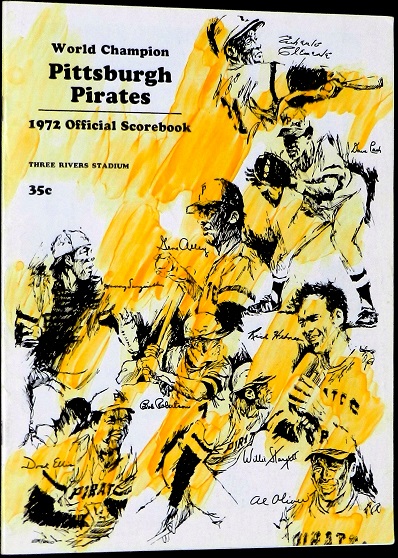
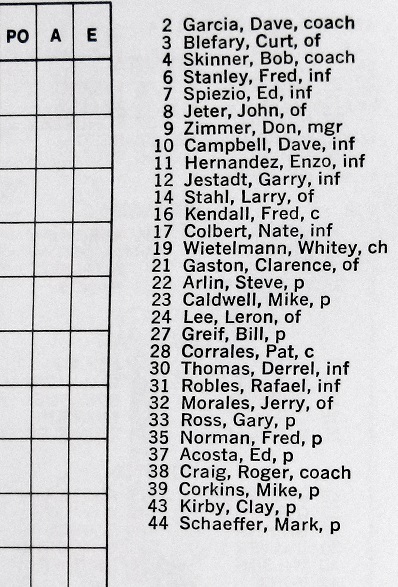
Scorebook/program, above, from my first live baseball game: San Diego at Pittsburgh on June 18, 1972 (a Sunday afternoon). In town for a family wedding at 13 years of age, Dad forbade me from going the previous night with cousins; he was always a bit over–protective. But, he’s also the nicest human being I’ve ever known. As such, he felt badly about his decision and took me to the Sunday afternoon finale of the series at Three Rivers Stadium, then in its third year as home of the Pirates and NFL Steelers. I remember we got tickets behind home plate in the second deck; terrific seats. The Pirates were defending World Series champions after defeating Baltimore in 1971. And, I’ll always remember watching the great Roberto Clemente, not realizing, of course, that he would die in a plane crash six months later while providing aid to earthquake victims in Nicaragua. In the Pittsburgh dugout was 35–year–old Bill Mazeroski, whose famous bottom–of–the–ninth home run off Ralph Terry in Game 7 of the 1960 World Series allowed the Pirates to “walk off” against the New York Yankees at Forbes Field, the forerunner to Three Rivers Stadium. It was the first time a home run had decided the Major League championship; the second would occur 33 years afterward, at SkyDome in Toronto, when Joe Carter’s line–drive to left field off Mitch Williams allowed the Toronto Blue Jays to “walk off” the Philadelphia Phillies for the 1993 title and repeat as world champs. In the visitors’ dugout (line–up, right) was the person who would manage the consecutive Blue Jays triumphs just more than 20 years later — outfielder Clarence Gaston (21) of the Padres (better–known as “Cito”), then 28 years of age. San Diego prevailed, 1–0, before 27,143 fans.
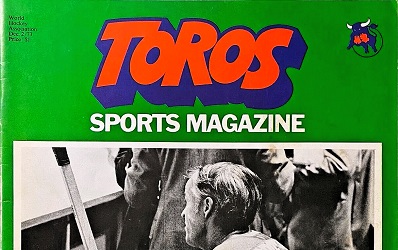
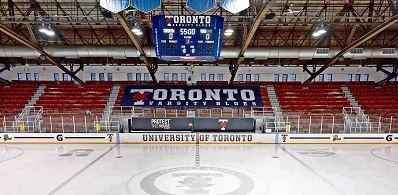
In the second season of the World Hockey Association (1973–74), the Ottawa Nationals relocated and became the Toronto Toros. My father’s accounting firm bought four season tickets in tiny Varsity Arena (photo, right). I remember we sat between the blue line and center ice, in the top row, in front of the bank of windows. The Toros played home games mostly on Sunday nights before moving into Maple Leaf Gardens for 1974–75. I still shake my head when considering that NHL legends Gordie Howe and Bobby Hull played at Varsity.
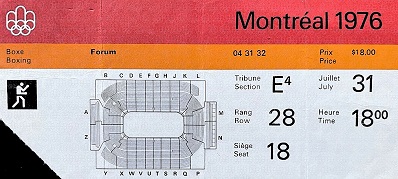
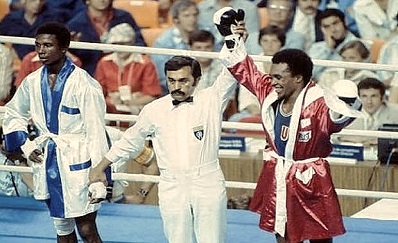
On the final weekend of the 1976 Summer Olympics, Dad drove me and my pal, Jeffrey Spiegelman, to Montreal. We left around 11 p.m. on a Friday and commuted through the night. Dad’s accounting partner, Jack Rothman, had arranged for hotel rooms and track and field tickets on Saturday afternoon at the Olympic Stadium. We attended and were fortunate to watch Canadian Greg Joy win a bronze medal in the high jump. Deciding to leave after Joy’s triumph was our best decision. Just prior to entering the stadium, Dad and Jack blew a couple week’s pay on scalper’s tickets for the boxing finals, that night, at the Montreal Forum. Me, Dad and Jeff took a cab from the Big O to the Forum and arrived in time to see such American fighters as Sugar Ray Leonard; Michael and Leon Spinks win gold medals. Poor Jack stayed to watch the track finals and arrived at the Forum toward the end of the historic boxing event. It was my first time inside the legendary home of the Montreal Canadiens.
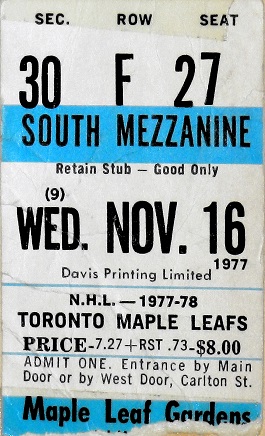
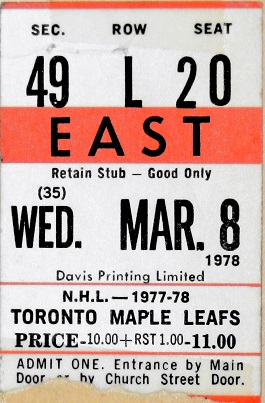
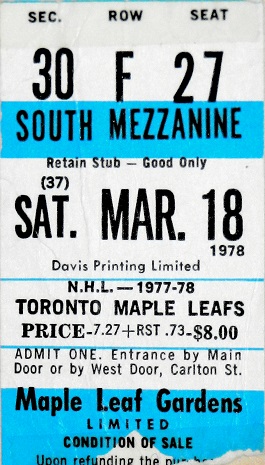
With the WHA Toros drawing meager crowds and planning to relocate in Birmingham, I asked Dad at home, one day, if we could look into Leafs season tickets. In early September, 1975, we drove down to the Gardens and walked up a steep, winding staircase just east of the main entrance off Carlton St. A door at the foot of the staircase read SPECIAL TICKET OFFICE. We were greeted by a man who showed us a detailed map of the arena and pointed out a pair of seats he could sell us in Sec. 30 of the south–mezzanine Blues. He then ushered us through a back entrance and directly to the location in the last row of the balcony — up behind and to the left of the goal defended by the Leafs in the first and third periods. While seated, the net was partially obstructed by railings from the five rows beneath us. Given, however, that Row F was up against the back wall, we could stand without blocking anyone’s view. I remember looking directly ahead of the location to the original broadcast gondola with an “ESSO” logo on the side facing us. It was suspended from girders near center ice on the west flank of the building, constructed for Foster Hewitt when the arena opened in November 1931. I also remember feeling quite surprised that any season tickets were available to Leaf games. The club of the mid–70’s, with such youthful stars as Darryl Sittler, Lanny McDonald, Borje Salming and Ian Turnbull, held much promise. Dad liked the view and he wrote a check for the full amount. In ’75–76, our tickets sold for $6.60 apiece (no joke). Over 43 games (three exhibition and 40 regular season) the cost for one season seat was $283.80. Dad, therefore, signed a check on that late–summer afternoon for $576.60, the full cost of two season tickets. Ticket stubs, above, are from the 1977–78 season. Below, from Games 1 and 3 of the 1976 preliminary round playoff against the Pittsburgh Penguins. Dad’s office had the east Reds in Sec. 49, Row L: behind the Leafs bench between the south blue line and center ice. I attended games in these tickets until 1983–84, when I was granted my first media credential.
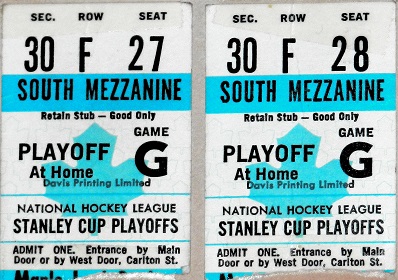
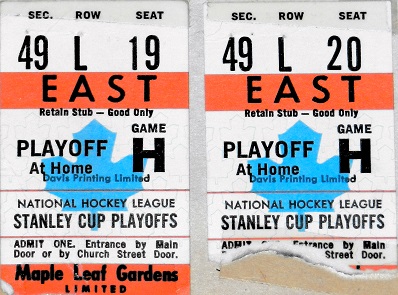
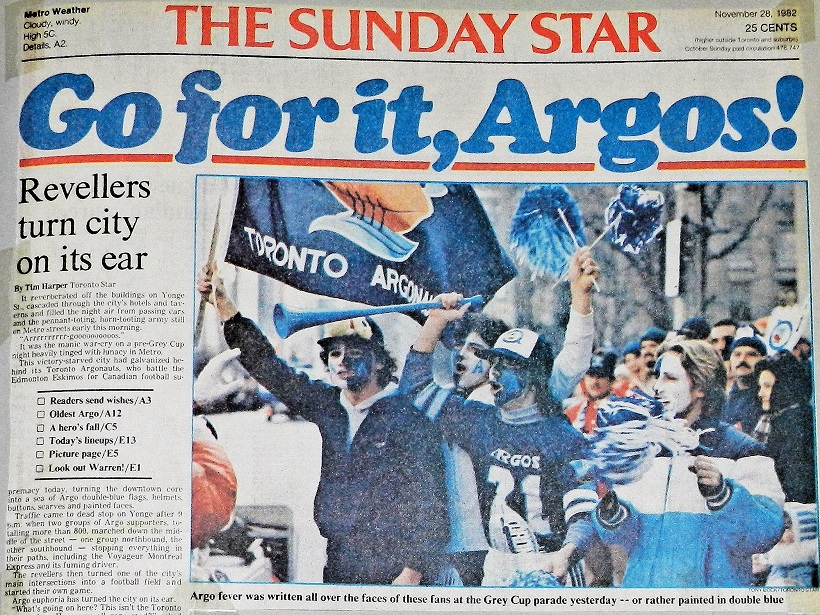
In the late–70’s, Dad lost interest in going to the Argos games. But, I took him with me to the 1982 Eastern final, in which the Boatmen routed the Ottawa Rough Riders, 44–7 (Nov. 28 Toronto Star cover, above). It was a cool, misty afternoon by the lake and a tick fog rolled in at one point that obstructed our view of the east end zone. I still remember Argos quarterback Condredge Holloway throwing a deep pass to slotback Paul Pearson. We couldn’t see how the play ended, but were heartened when fans in the grandstand began to cheer. More than 44,000 were at the CNE to watch Bob O’Billovich and the Argos advance to the ’82 Grey Cup against Edmonton.
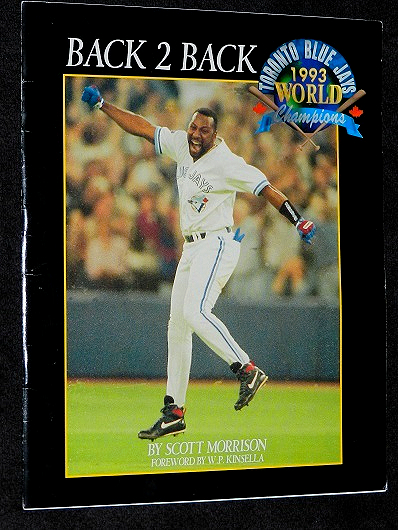
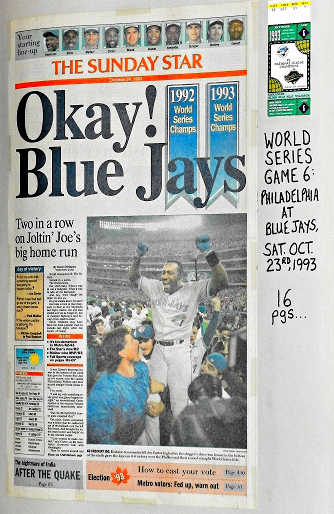
I was in Sunnybrook Hospital with a complication from Crohn’s surgery the night Joe Carter won the 1993 World Series for the Toronto Blue Jays. I had gone to Philadelphia with radio colleagues Scott Ferguson and Dan Shulman to cover Games 1 and 2 of the Series. But, had to fly home prior to the opener with stomach pain and a high fever. Dad, however, was at Game 6 with his accounting partners, in the firm’s season tickets behind the third–base dugout. And followed Carter’s ball into the stands to his left, as the Blue Jays defended their ’92 title.
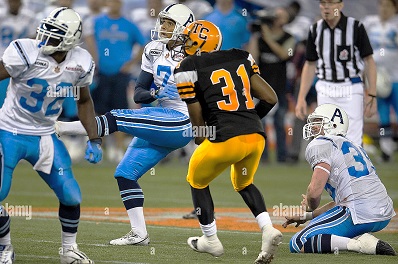
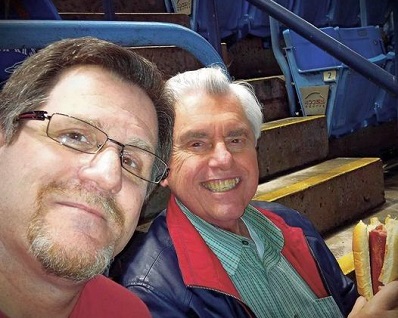
A photo (left) from the last Argos game I attended with Dad: Sep. 11, 2009, at SkyDome, against Hamilton. My son, Shane, was with us. The clubs wore throwback jerseys that night and the Argos won, 25–22, in double–overtime on a field goal by Justin Medlock. At right are me and Dad in our final live sports event together: May 29, 2014 as the Blue Jays hosted the Kansas City Royals. He was 80 at the time and wolfed down a foot–long hot dog. I hope you’ve enjoyed reading these memories. They will sustain me for the rest of my life.
THE HILDE–BEAST IS NO. 80
When Dennis Hildeby started for the Maple Leafs on Thursday night in New Jersey, he became the 80th man to play goal for the club since its last Stanley Cup triumph on May 2, 1967.
Here is the entire roll call, beginning in 1967–68:
JOHNNY BOWER, BRUCE GAMBLE, AL SMITH, MARV EDWARDS, GERRY McNAMARA, JACQUES PLANTE, BERNIE PARENT, MURRAY McLACHLAN, GORD McRAE, RON LOW, DOUG FAVELL, DUNC WILSON, EDDIE JOHNSTON, PIERRE HAMEL, WAYNE THOMAS, MIKE PALMATEER, PAUL HARRISON, JIRI CRHA, CURT RIDLEY, VINCENT TREMBLAY, JIM RUTHERFORD, MICHEL (BUNNY) LAROCQUE, BOB PARENT, RICK ST. CROIX, ALLAN BESTER, KEN WREGGET, BRUCE DOWIE, TIM BERNHARDT, DON EDWARDS, JEFF REESE, MARK LaFOREST, PETER ING, DAMIAN RHODES, GRANT FUHR, FELIX POTVIN, RICK WAMSLEY, DARREN PUPPA, DON BEAUPRE, MARCEL COUSINEAU, GLENN HEALY, CURTIS JOSEPH, COREY SCHWAB, TOM BARRASSO, SEBASTIEN CENTOMO, ED BELFOUR, MIKAEL TELLQVIST, TREVOR KIDD, JEAN-SEBASTIAN AUBIN, ANDREW RAYCROFT, SCOTT CLEMMENSEN, VESA TOSKALA, MARTIN GERBER, JUSTIN POGGE, JEAN-SEBASTIEN GIGUERE, JONAS GUSTAVSSON, JOEY MacDONALD, JAMES REIMER, BEN SCRIVENS, JUSSI RYNNAS, JONATHAN BERNIER, DREW MacINTYRE, GARRET SPARKS, FREDERIK ANDERSEN, JHONAS ENROTH, ANTOINE BIBEAU, CURTIS McELHINNEY, CALVIN PICKARD, MICHAEL HUTCHINSON, KASIMIR KASKISUO, JACK CAMPBELL, DAVID RITTICH, PETER MRAZEK, JOSEPH WOLL, ERIK KALLGREN, MATT MURRAY, ILYA SAMSONOV, JETT ALEXANDER, MARTIN JONES, ANTHONY STOLARZ, DENNIS HILDEBY.
EMAIL: HOWARDLBERGER@GMAIL.COM

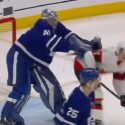
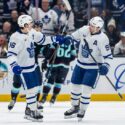
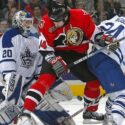
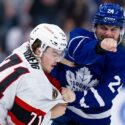
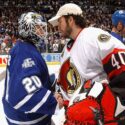





























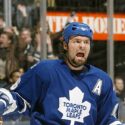
I am very sorry for your loss. Thank you for sharing your memories and my prayers for you and family at this time.
You have amazing memorabilia. I hope one day you will be inspired to have a show to display it all.
What a pair, you and Dad. Thank you for sharing in vivid detail, and my condolences.
Your dad was cool. He showed you a good time in sports and permitted you to pursue your interests, without prejudice.